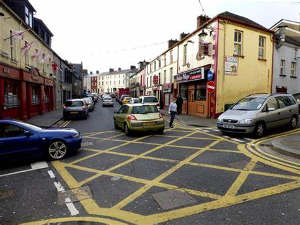All You Need To Know About Traffic Light Cameras

Traffic light cameras stand as silent sentinels at busy junctions, silently monitoring the flow of vehicles and ensuring compliance with essential traffic regulations.
These cameras have been fixtures on UK roads for over two decades, serving a critical role in enhancing road safety and deterring reckless driving.
Traffic light cameras are primarily designed to enforce adherence to red light signals. They detect vehicles after the lights have turned red using sophisticated technology, such as sensors or ground loops embedded in the road.
Gatsometer, the predominant motor trade manufacturer of these cameras in the UK, produces Gatso RLC 36 units equipped with radar technology. These devices capture speeding violations and serve as guardians against red light infractions.
All private and motor trade motorists must exercise caution and refrain from attempting to race through changing lights.
The consequences can be severe, both legally and in road safety, potentially resulting in accidents, fines, or penalty points on your driving licence. In all cases, this will negatively impact when renewing your insurance policy from your local insurance broker.
While larger and busier junctions are more likely to host red light cameras, the absence of visible cameras doesn’t imply impunity.
Every junction should be cautiously approached, as safety concerns often dictate the installation of surveillance systems. Additionally, smaller cameras mounted atop traffic lights help monitor traffic flow and congestion, though they don’t function as enforcement cameras for driving offences.
Unlike their conspicuous counterparts, traffic light cameras may not always flash to indicate a violation. Some models, such as the newer Trevulo-D speed cameras, utilise infrared flashes invisible to drivers.
How will I know I’ve received a ticket?
Motorists may only become aware of their infringement upon receiving a Notice of Intended Prosecution (NIP) within 14 days of the incident. Upon receipt of an NIP, the registered owner is typically required to identify the offending driver and respond within 28 days.
Admission of guilt and payment of a fixed penalty fine often accompany these notices, though motorists retain the right to appeal if they believe mitigating circumstances exist.
However, red light violations constitute strict liability offences, meaning intent holds little sway in legal proceedings. Defences against such charges typically revolve around proving non-violation or highlighting defects in traffic signals or signage.

Other surveillance systems, including traffic cameras deployed across motorways and trunk roads, also serve distinct purposes. Operated by Highways England, these cameras contribute to traffic management efforts by monitoring congestion levels and aiding in emergency response coordination.
It’s important to note that traffic cameras primarily monitor traffic flow and congestion and are not used for speed enforcement. However, in certain areas, such as city centres, they may oversee yellow box junctions and bus lanes, enabling authorities to issue fines for violations.
Some may be surprised to learn that access to England’s traffic cameras is not restricted. This allows motorists and media partners alike to view live images of road conditions and plan routes accordingly.
Whether a breakdown recovery company, a commuter checking for congestion, or a driver navigating unfamiliar areas, these cameras offer valuable insights to enhance road safety and efficiency.
Understanding the role and implications of traffic cameras is paramount for all road users. By adhering to traffic regulations and exercising caution, motorists can contribute to safer roads and minimise the risk of encountering legal consequences associated with camera-detected violations.




